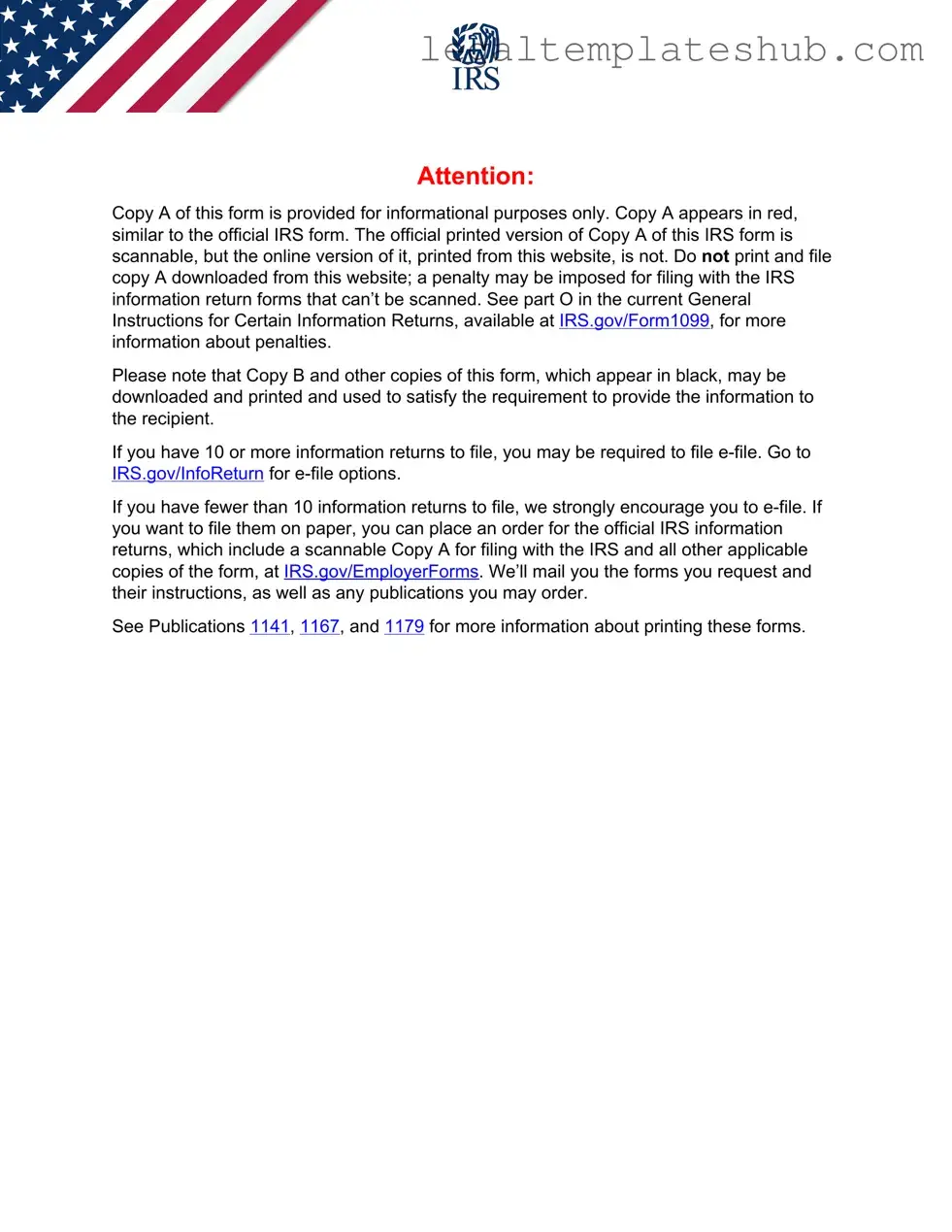Blank IRS 1099-MISC PDF Form
The IRS 1099-MISC form is a tax document used to report various types of income received by individuals or businesses that are not classified as wages. This form is crucial for freelancers, independent contractors, and others who earn income outside of traditional employment. Understanding how to accurately fill out and submit the 1099-MISC can help ensure compliance with tax regulations.
To get started on your 1099-MISC form, click the button below.
Access Editor
